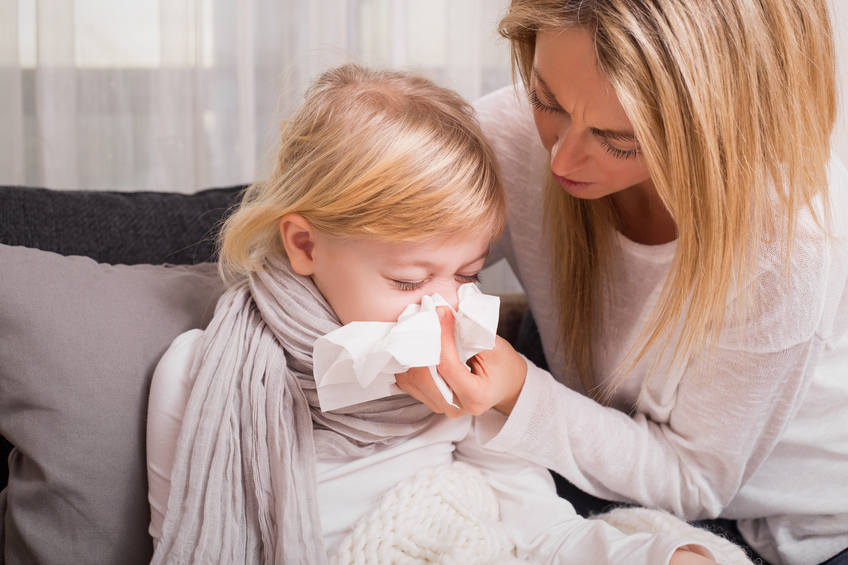The fall and winter months bring the excitement of holiday parties, the chance the dress up in costume, and the promise of cooler months that allow us to finally enjoy the outdoors (at least in Texas). Unfortunately, they also signal the onslaught of winter viruses, the flu, fall allergies, and sniffles, coughs, snorts and sneezes of various kinds. So, how do we gear up to support our kids with a strong immune system to help them stay healthy so that they and you can enjoy the fabulous season approaching?
You may have read that the FDA has banned antibacterial products in over the counter soaps and hand sanitizers. If you haven’t read about this yet, you can do so here:
http://www.fda.gov/NewsEvents/Newsroom/PressAnnouncements/ucm517478.htm
In fact, they stated this:
“Consumers may think antibacterial washes are more effective at preventing the spread of germs, but we have no scientific evidence that they are any better than plain soap and water,” said Janet Woodcock, M.D., director of the FDA’s Center for Drug Evaluation and Research (CDER). “In fact, some data suggests that antibacterial ingredients may do more harm than good over the long-term.”
The harm that Dr. Woodcock is referring to is the fact that some of these antibacterial chemicals cause hormone disruption and bacterial resistance.
So, what can a parent do naturally to help minimize the risk of infections in their children while ensuring they are not exposing them to potentially toxic chemicals?
Here are a few recommendations that really work:
1. Modify your child’s diet
Starting in the fall, I notice that my children get more sniffles and mucous. My older son begins to develop his notorious snort. After a long summer of relaxed rules which includes ice cream for dessert and grilled cheese sandwiches by the pool, I make a conscious effort to reduce the dairy included in their diet. If you are unconvinced about dairy having an effect on the mucous production and inflammation in your child’s sinuses, just try to eliminate it for 30 days and see if you notice a difference in your child. I hear from many of the parents of my young patients that reducing or eliminating dairy not only decreases their kid’s constant nasal mucous , but also helps reduce ear infections as well.
Additionally, I would argue that a high dairy intake is not necessary for our children after a young age. In fact, a recent very large study in a reputable medical journal indicated that in Sweden, a country that has one of the highest rates of dairy intake, they also have the highest rates of osteoporosis and fractures. Here is the link to that study:
http://www.bmj.com/content/349/bmj.g6015
If you are concerned about calcium intake in your child, here are non-dairy sources of calcium: calcium-fortified cereals, breads, rice milk, or almond milk, canned fish (sardines, salmon with bones), soybeans and other soy products (tofu, soy yogurt, tempeh), some other beans, and some leafy greens (collard and turnip greens, kale, bok choy). Of note, ½ cup of kale or spinach contains half the amount of calcium as 1 cup of milk. This link contains a chart to compare amounts of calcium in various foods:
I also recommend decreasing the amount of gluten in your child’s diet as this has also been noted to be an inflammatory substance for many children. Again, doing a trial of elimination for 30 days will help you decide what’s right for your own child.
2. Add a probiotic and prebiotics to your child’s daily routine.
I have a prior blog post on probiotics that you can read here: https://www.drshellysethi.com/blog/2016/8/get-dirty-to-get-healthy
To summarize however, probiotics that contain both lactobacillus and bifidobacter species of bacteria, have been shown to lower the incidence of respiratory infections and sinus infections in children. Probiotics act as a placeholder of sorts to discourage harmful bacteria from growing in the gut. It is important to remember however, that you need to continue to nourish the gut microbiome with a healthy plant-forward diet and prebiotics. Prebiotics include fiber, oligofructose and inulin found in the skin of apples, bananas, onions, garlic, Jerusalem artichoke, chicory root and beans. You can also get a prebiotic supplement or try potato starch in a smoothie.
Brands of probiotics I like: Integrative Therapeutics (small pearl that’s easy for kids to swallow): http://www.integrativepro.com/Products/Probiotics/Probiotic-Pearls
and Thera-biotic (chewable form available): http://www.klaire.com/probiotics_cat.htm
3. Give Vitamin C and Zinc supplementation daily.
Both of these supplements have been shown in studies to increase the immunity in our children and therefore reduce the rate of infections.
The doses are as follows:
For Zinc: ages 6 months – 3 years old: 2-3mg per day, ages 4-8 years old: 5mg per day, ages 9-13 years old: 8-10mg per day, ages 14-18 years old: 10-15mg per day
For Vitamin C: give 250-500 mg of buffered ascorbic acid two or three times daily up to 1000 mg daily.
Both of these can be found in liquid form or chewable, and it’s recommended to give with meals. Of course, it’s would also be good practice to increase the food sources of both vitamin C (high in yellow, red and orange fruits and vegetables, green leafy greens) and zinc (high in beans, nuts, certain types of seafood such as crab, lobster and oysters), and whole grains.
4. Maximize Vitamin D intake.
In the winter months, it is difficult to obtain enough sunlight for the skin to convert vitamin D into a useable form. Read about that here: https://www.washingtonpost.com/news/speaking-of-science/wp/2016/05/12/the-weird-history-of-vitamin-d-and-what-it-actually-has-to-do-with-sun/
Adequate vitamin D is necessary to carry out the body’s complex hormonal and immune responses that keep our kids functioning at their best. Other than sunlight, fatty fish are a good source of vitamin D. However, most children need supplementation to obtain an adequate blood level. Here is the recommended dose: Babies up to age 1 year old, 400 units per day, ages 1-5 years old, 500-1000 units per day, ages 5-10 years old, 1000 units per day, ages over 10 years old, 1000-2000 units per day.
5. Try a nasal spray to keep the nasal passages and sinuses clear.
A wonderful integrative ENT colleague of mine, Dr. Faust (http://www.boogordoctor.com) recommends a product containing xylitol. Xylitol is a powerful antimicrobial that occurs in nature. Used regularly, at least 2-3 times per week, it can help prevent sinusitis and even allergies. My young kids find it easy to use, and they like this product: http://www.xlear.com/store/xlear-sinus-care.html
6. Try increasing Quercetin if your child has asthma or is prone to rhinitis and sinusitis.
Quercetin is a powerful anti-inflammatory and is found in these foods: apple, grapes, broccoli, tomatoes, onions, some squashes and green peppers. Studies have shown that histamine release is reduced with increased quercetin in the diet. This means less sneezing, itching and runny noses for your child. We also know that quercetin is best absorbed between meals, and when combined with bromelain (an enzyme found naturally in pineapple). This is a product that I believe has a good safety profile and that I use when my child has the allergic sniffles: http://www.orthomolecularproducts.com/d-hist-jr-/
7. Elderberry can help fight respiratory viruses.
In the unfortunate situation of your child coming down with a cold, try elderberry syrup. If used early enough in the infection, the berries can help fight against influenza, common cold viruses and boost the immune system. It also functions as an anti-inflammatory. Studies have shown the following doses effective in clinical trials against flu:
one tablespoon (15 mL) 4 times daily of a specific elderberry juice-containing syrup (Sambucol, Nature’s Way) daily for 3-5 days. A dose of 15 mL (1 tablespoon) twice daily for 3 days has been used in children. A specific elderberry lozenge (ViraBLOC, HerbalScience) 175 mg 4 times daily for 2 days.
8. Try echinacea to ward off potential respiratory infections.
When I hear of a respiratory infection that’s spreading around the school, or at the first sign of an oncoming cold, I use echinacea to boost my children’s immune systems. A large meta-analysis of 14 studies published in the journal Lancet, showed that
Echinacea cuts the chances of catching a cold by 58% and reduces the duration of the common cold by almost one-and-a-half days.
I don’t know about you, but being able to send my sons back to school one day earlier makes me a happier mom!
I like this product for my children, because their botanicals are pesticide free and have a good safety profile. Also, be careful of herbal products that contain alcohol as this is typically used in herbal tinctures to extract the herbs. This product is formulated for kids and is alcohol free: http://www.gaiaherbs.com/products/detail/700/GaiaKids-Echinacea-Supreme
Beginning a daily routine in the early fall will help your children and your family stay as healthy as can be which will make the season much more enjoyable for everyone. Don’t forget to encourage plenty of sleep for the whole family and keep the “holidaze” as stress-free as possible.
Stay tuned for upcoming blog posts on how to keep the season merry and bright with mind-body practices for the whole family and how to eat as enjoyably and healthy as humanly possible when surrounded by cookies, cakes and gingerbread flavored everything…



